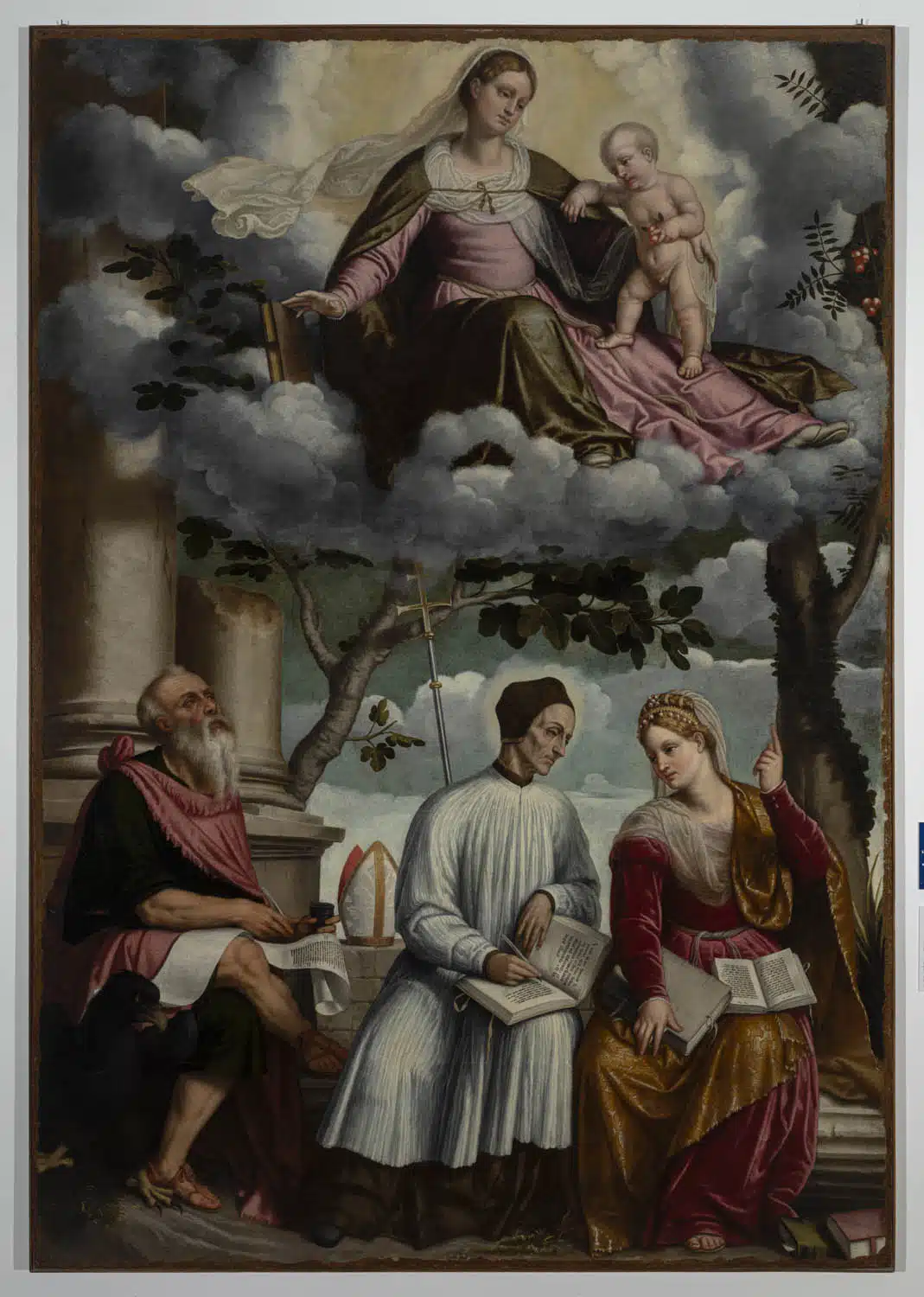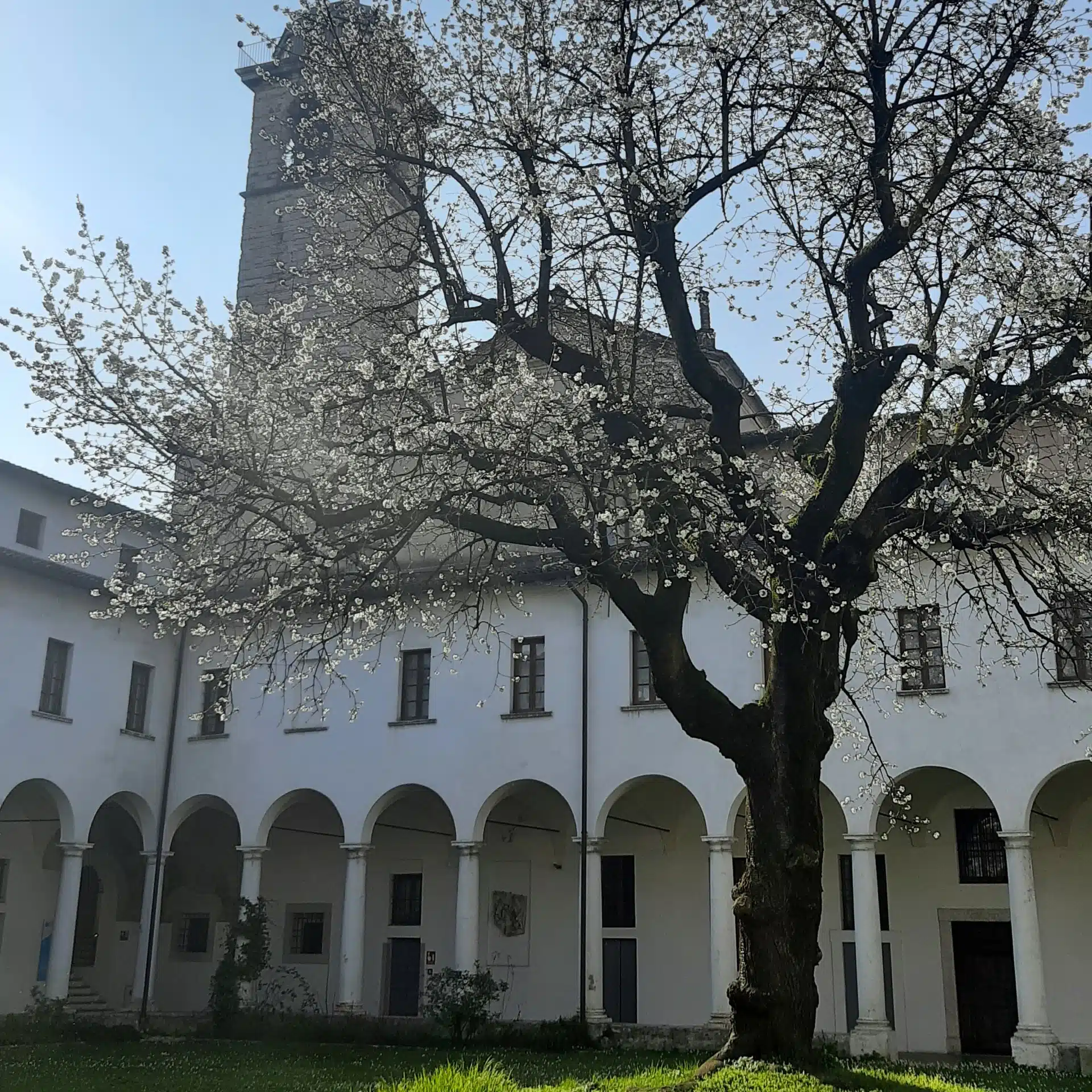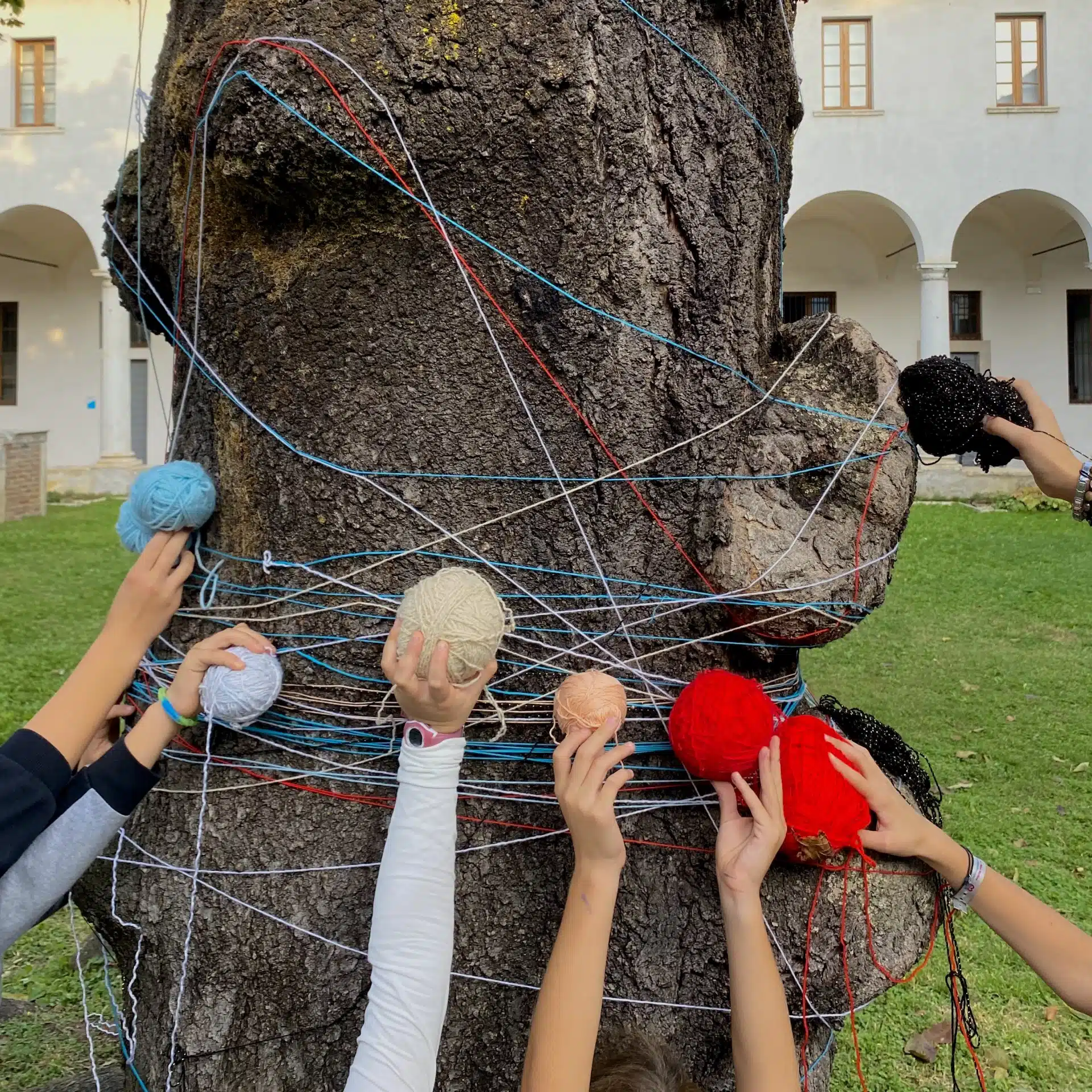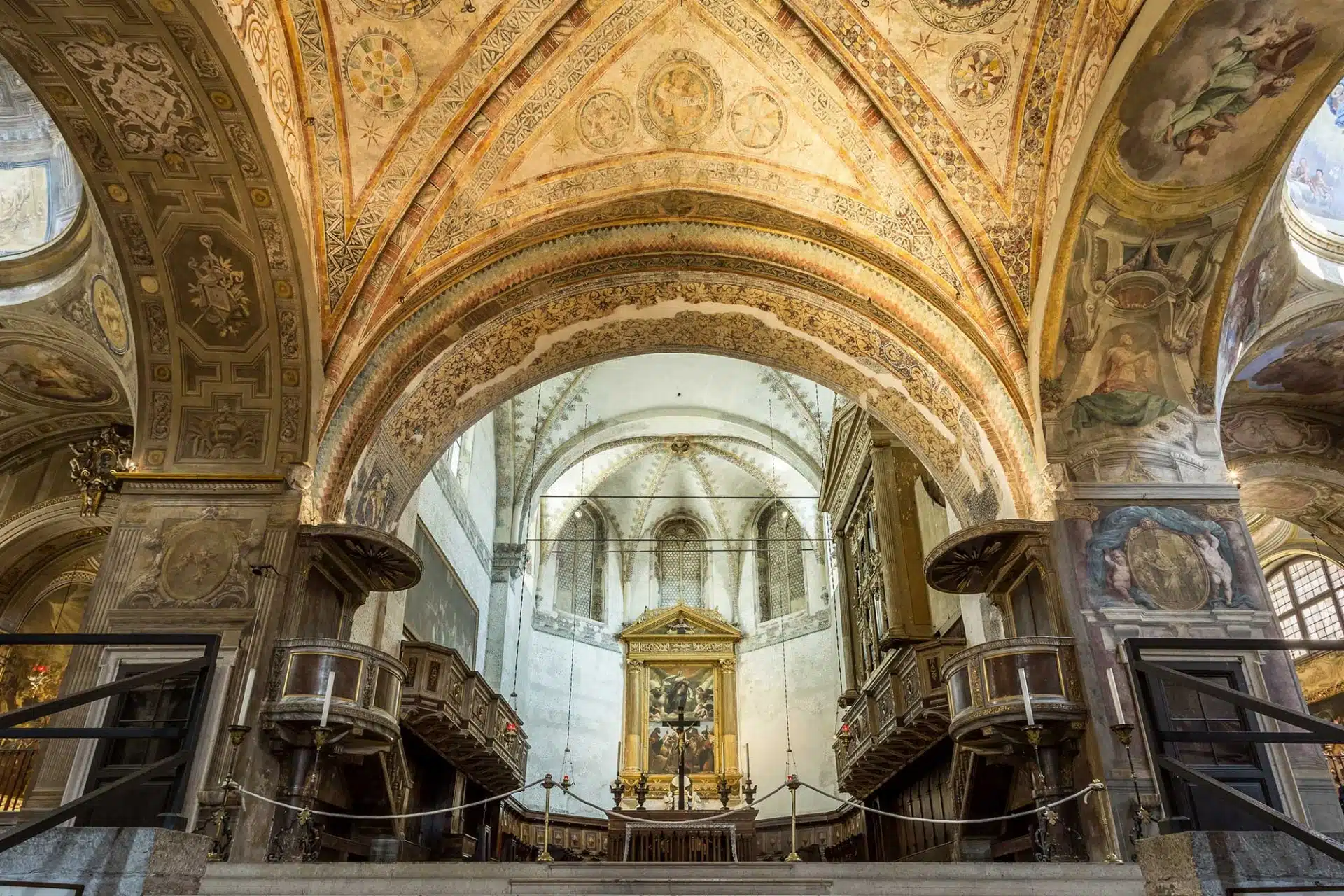I quattro santi coronati
Autore: Pietro Avogadro (Brescia 1667-1737) Olio su tela - 281x292 cm Provenienza: Brescia, Chiesa di San Giuseppe -
Il dipinto di Pietro Avogadro si trovava nel terzo altare di sinistra della chiesa di San Giuseppe. Fu commissionato dal paratico dei tagliapietre, o scalpellini, dei quali i Quattro Santi Coronati erano patroni.
Curiosamente, le guide artistiche di Francesco Maccarinelli e Giovanni Battista Carboni riportano che la pala fu spostata nella sagrestia della chiesa. Solo nei primi anni del Novecento fu riposta nel suo altare d’origine.
Tuttavia, la riscoperta nel 1920 di un ciclo di affreschi di Floriano Ferramola costrinse un nuovo spostamento dell’opera nel presbiterio della chiesa. Fu solo negli anni Novanta ch’essa confluì definitivamente nella collezione del Museo Diocesano di Brescia.
Pietro Avogadro rappresenta il momento in cui l’imperatore Diocleziano incarica i quattro santi di costruire una statua per il dio Eusculapio. Al loro rifiuto in quanto cristiani, l’imperatore avrebbe poi ordinato il loro martirio.
I quattro santi scalpellini sono in primo piano, intenti a scolpire alcune parti di una colonna di marmo. L’imperatore, in secondo piano a sinistra, è circondato da soldati e dignitari e sta cercando di farsi ascoltare. In alto a destra, quattro angeli scendono dal cielo recando palme e corone di alloro: sono il simbolo del loro martirio.
Pietro Avogadro costruisce la scena in un taglio diagonale e ravvicinato che rende i personaggi più monumentali. La classicità delle figure e la rigidità dei panneggi denotano il debito verso Pompeo Ghitti, col quale il pittore collaborò negli affreschi della chiesa di Sant’Agata a Brescia.
Questi elementi vengono però stemperati da un interesse verso il colorismo veneto tipico delle opere tarde di Pietro Avogadro. Lo si riscontra infatti nella Morte di Anania e la Resurrezione di Tabita dipinti per la cappella di San Pietro nella stessa chiesa.
Don Andrea Morosini, nel 1961, datò l’esecuzione dei Quattro Santi Coronati nel 1716. È in quello stesso anno in cui il paratico dei calzolai ottenne in concessione il terzo altare della navata sinistra.
In assenza di documenti più precisi, si può ipotizzare come data l’arco di tempo tra altre due opere di Pietro Avogadro per la stessa chiesa: il Martirio dei Santi Crispino e Crispiniano (1706) l’Adorazione dei Magi (entro il 1720).











